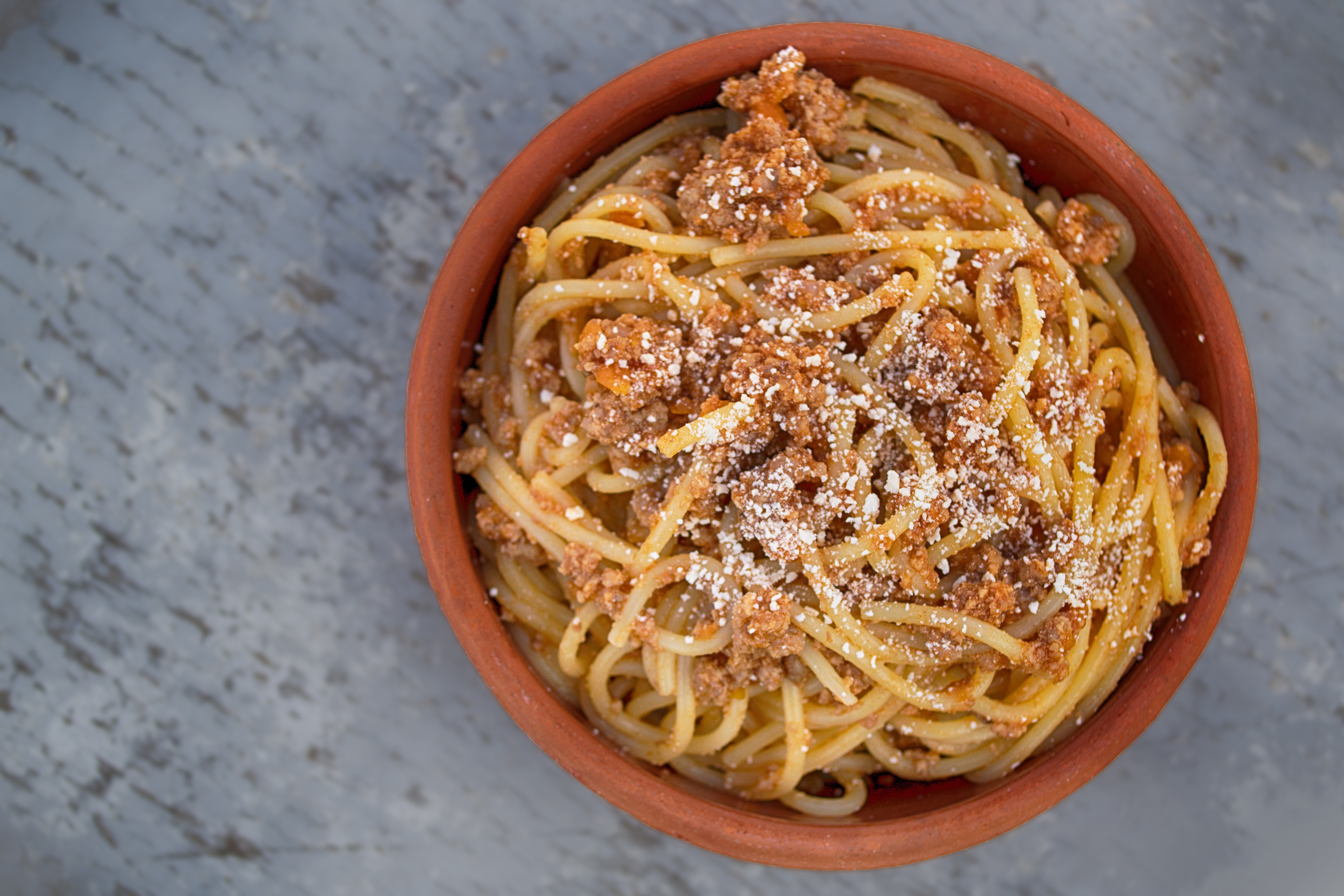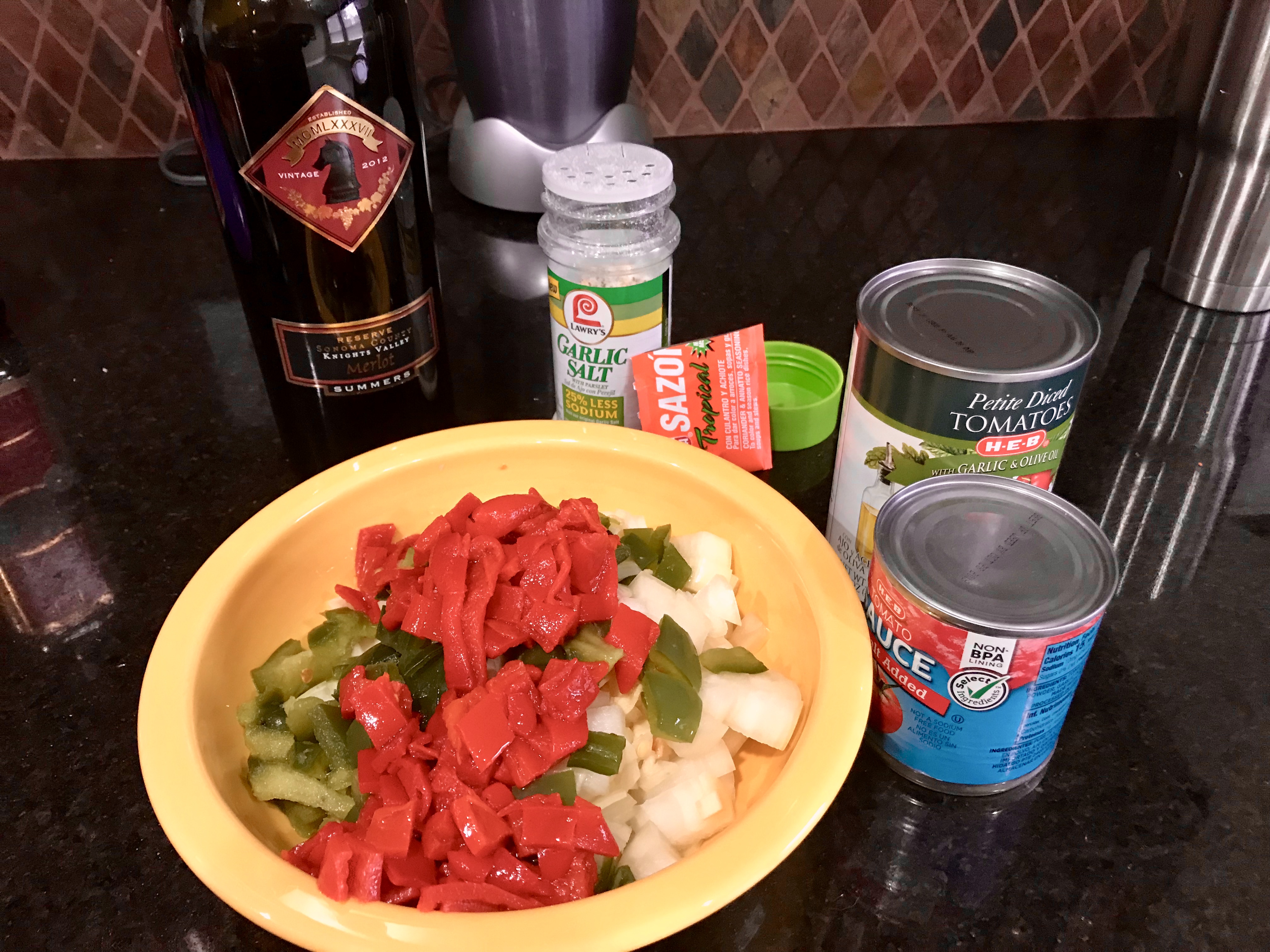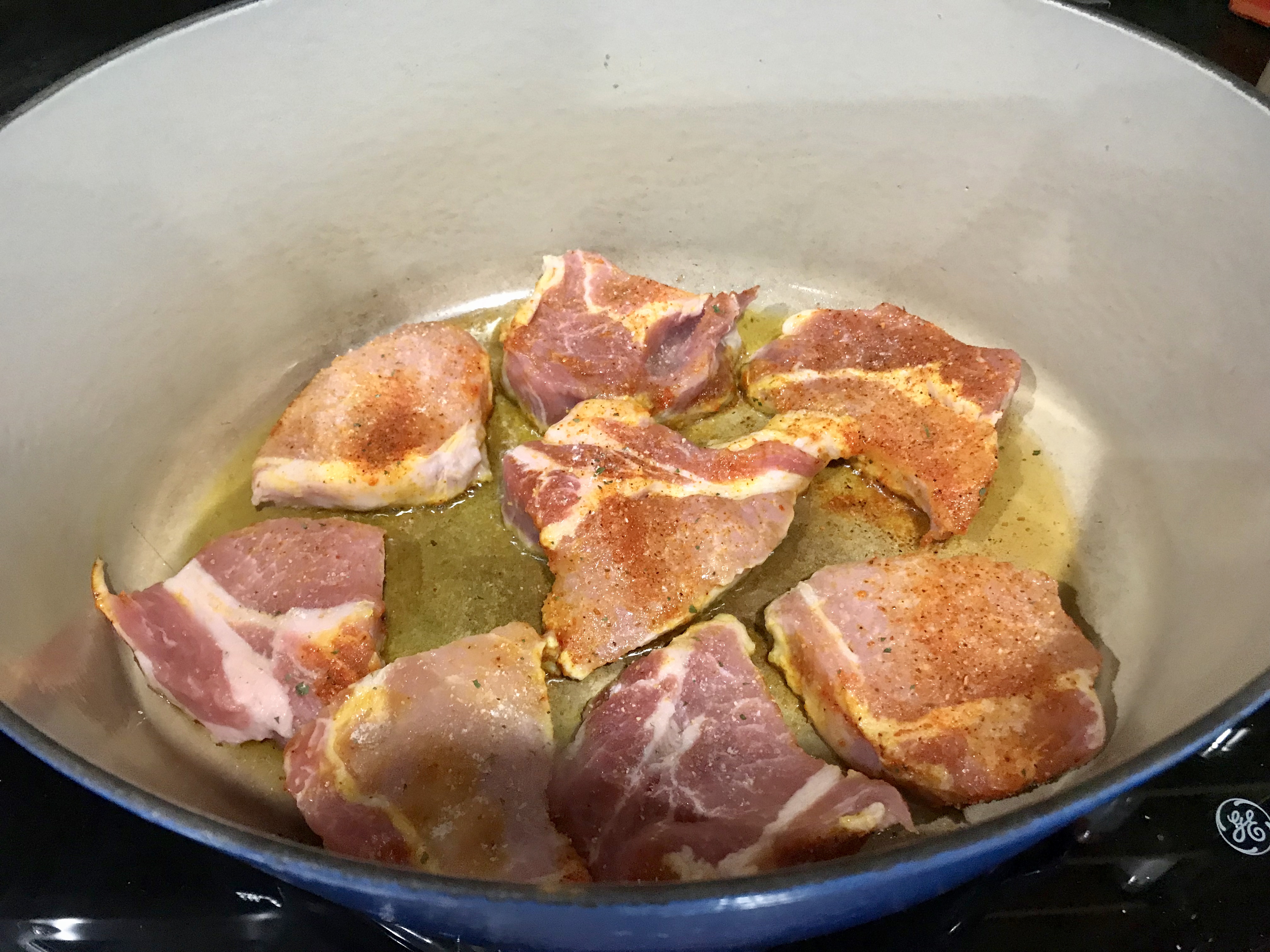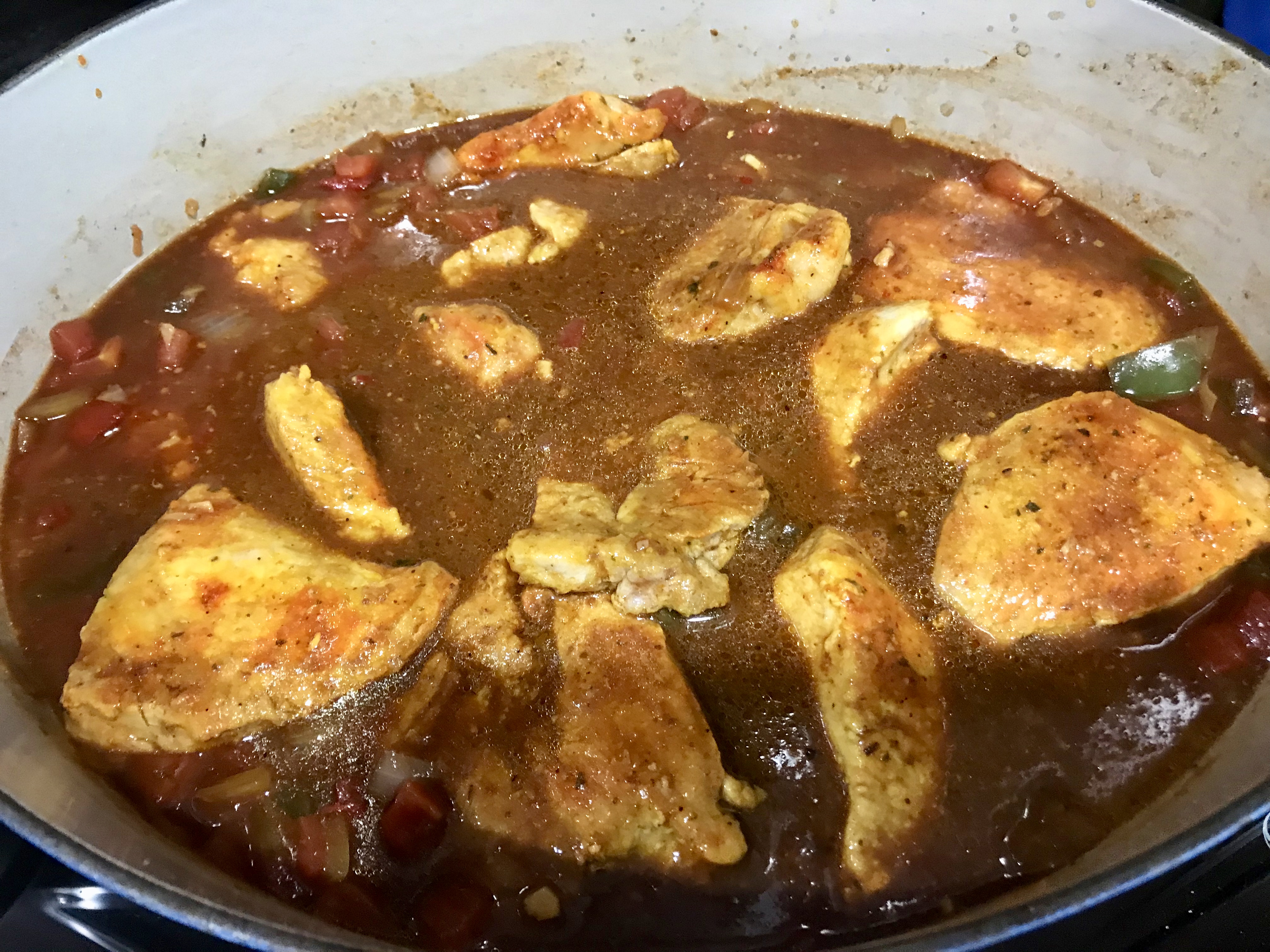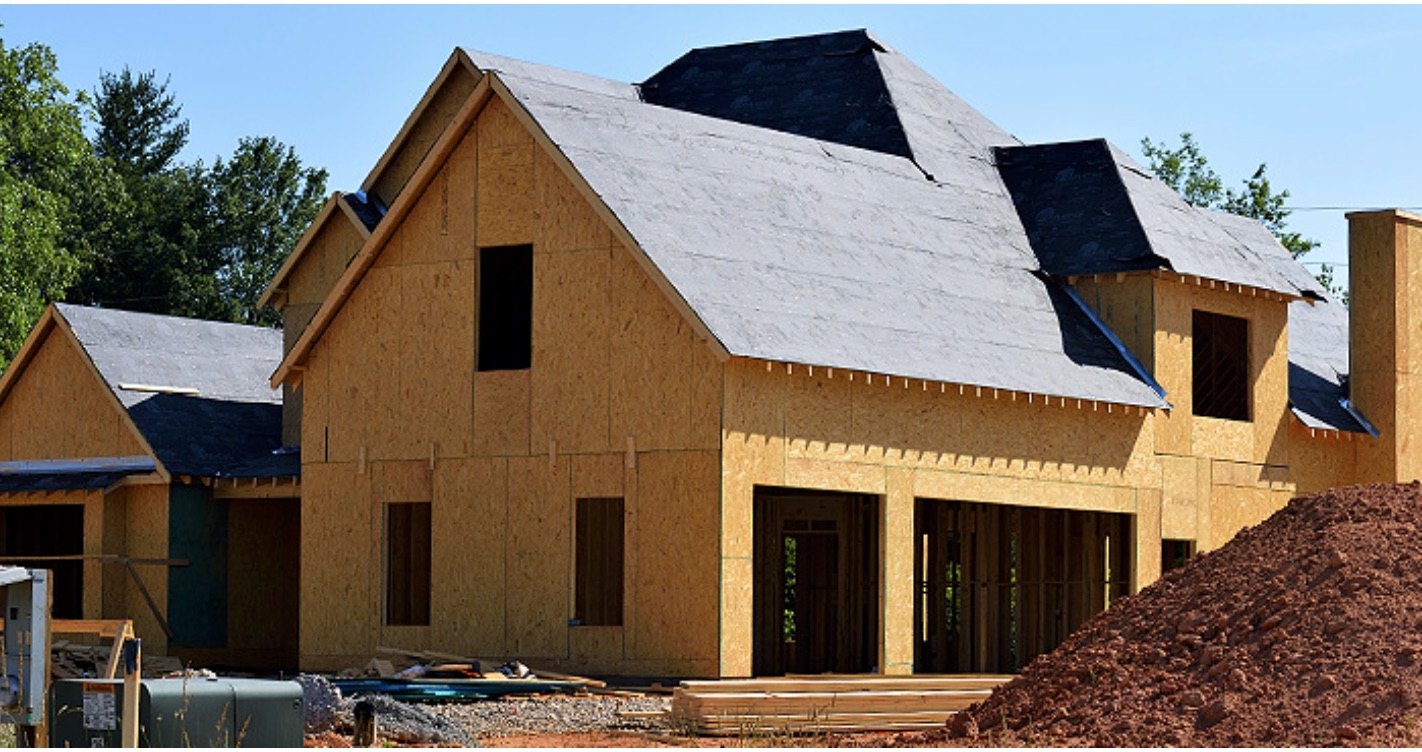Tag: happy clients realty group
Annual review of your escrow account
What is escrow?
Your mortgage payment is made up of the following:
- Part goes toward your mortgage to pay your principal and interest.
- The other part goes into your escrow account for property taxes and insurance premiums (like homeowners insurance, mortgage insurance, or flood insurance).
When you purchase a home and put down less than 20%, the lender will requiere that you escrow your taxes and insurance. An account is opened at the time your home is purchased. The funds within the account are used to pay your property taxes and insurance premiums. These are paid by the lender directly using these funds. This typically helps the home owner because you don’t have to save for these funds separately.
In Texas we pay property taxes in arrears. In Jan of the current year, you are paying the past year’s property taxes. By “property taxes” I’m referring to property, School, MUD, LID and/or Drainage Taxes (not all applicable for all). It might look something like the image below.
At the beginning of the year I’d suggest you do two things:
- Make sure that your taxes have been paid. Lenders make mistake and sometimes overlook a payment. Taxes are due by Jan 31st so make sure that the payment is applied before that date.
- Review your escrow account for errors, shortages and overages.
#1 Confirm Payment
Go into the jurisdiction’s website and make sure your balance is zero. If there is a balance owed make sure to follow up with your lender.
#2 Yearly escrow review
Property taxes and insurance premiums change over time. Most lenders will review your escrow account each year to make sure you’ll have enough to cover your expenses. To help with any unexpected increases, you need to keep a minimum balance in your account at all times. It’s normally calculated to not be more than 2 months of escrow payments (but this will vary by bank).
The lender will add your taxes and insurance and divide this amount by 12. This is the minimum amount you need in your escrow account. Normally the lender will want at least 2 month cushion to cover any potential increases in taxes or insurance. Most lender will send you an analyzes by mail or online.
Shortage
If you have an escrow shortage due to an increase in your taxes or insurance premiums, you are responsible for the difference. The bank will send you a notice stating the amount outstanding. It’ll be your choice how you handle it. You can either pay the entire shortage in one lump sum or you can choose to have the amount spread out over the coming year. This means if your shortage is $500, expect to pay an additional $41.67 each month the following year to make up the shortage. Your payment might also increase more as the lender increases the amount going into escrow to pay the next year’s taxes and insurance. In this example you might see an overall increase of approximately $80-100
Please note that if you choose to pay the total shortage in one lump sum, your payment will still increase to cover next year’s potential shortage.
Surplus
If you have too much money in your escrow account, you might get a refund check from the lender. This usually occurs when taxes go down or payments are overestimated. The lender will pay the appropriate amount to each jurisdiction. Whatever is left goes to you, minus their desired cushion. You should receive notice that you have an escrow surplus and will receive a check not long after that. If this doesn’t happen, contact the lender for further details.
Going Forward
The lender should repeats this process every year but don’t relay on the lender to foresee issues. Be proactive! Before May of every year you will get your proposed assessed value from the tax jurisdiction. Review these statements. Has it increased? decreased? How will this effect your escrow balance?
To avoid unpleasant surprises, pay attention to correspondence from your insurance company or taxing jurisdictions. If you’re aware that your payments will increase, you can put additional money towards your escrow each month to avoid a shortage. If you see that your payments will go down, you can contact your bank to try to decrease your monthly escrow payments.
You can ask your lender to analysis your escrow account at any point. You do not have to wait for them to schedule the review. Increases or decreases in your annual tax or insurance bills may cause your monthly mortgage amount to change.
You can (and should) protest your taxes. The protest deadline is May 31st of each year. The final amount is established by the final quarter of each year.
For more info: Tax Protest
Dumplings, dumplings and more dumplings
INGREDIENTS
- 1 pound well-ground, fatty pork
- 1 pound Napa cabbage, rough slices
- 1 tablespoon fresh grated ginger
- 2 tablespoons water
- 2 scallions, sliced
- 4 tablespoons soy sauce
- 1 tablespoon Chinese cooking wine or sherry
- 2 teaspoons sesame oil
- 1 teaspoon fine salt
- Pinch of white pepper
- 1 package frozen or fresh dumpling wrappers
- small bowl of water
DIRECTIONS
Pork filling:
Bring a large pot of water to boil over high heat. Add the cabbage; blanch until just wilted. Using a slotted spoon, remove cabbage to strainer set over a large bowl. Press down on cabbage to squeeze out all liquid. Transfer to cutting board; roughly chop. Combine onions and pork, add ginger, Add the soy sauce, cooking wine, sesame oil, salt, and pepper to the meat mixture. Stir in chopped cabbage until completely incorporated.
Dumplings:
Using a spoon, place one heaping tablespoon of dumpling filling in the center of the dumpling wrapper. Using your fingertip, wet the outer edge of the dumpling wrapper with water. Fold up the sides of the dumpling into a half-moon shape. Pinch the edges of the dough until completely sealed. Do not overfill the dumplings. If any filling comes out, remove some and seal the dumpling completely.
Cook:
Boiled dumplings: To cook the dumplings, gently lower them into a medium pot of boiling water and boil for approximately three to five minutes. They are done when the dumpling skins are translucent and the dumplings have been floating for about three minutes. Remove from pot carefully with a slotted spoon.
Pan fried dumpling: Add 2 tbsp o oil in a pan, add on layer of dumplings, fold side up. Add 1/2 cup of water and cover. Steam the dumplings for about 4 mins. Dumpling wrapper with be translucent. Uncover and continue cooking until all the water evaporates and the dumplings are golden brown on the bottom side.
Fried: Heat oil and fry each dumpling until golden brown.
Serve hot with your favorite dumpling sauce
VARIATION AND TIPS
- You can freeze dumplings raw for up to 2 month.
- Bacon Cheese Burger dumplings: for filling combine 2 cups medium shredded sharp Cheddar, 1/3 pound thin-cut cooked and chopped bacon, 1/2 tablespoon kosher salt, 1/2 tablespoon freshly ground black pepper, 1/2 large red onion, small diced, 8 ounces 80/20 ground beef. Serve with ketchup and mustard
- Shrimp and onion dumplings: for filling combine: 1 lb chopped deveined and cleaned shrimp, 3 sliced green onions, 1/4 tsp grated ginger, 1 clove grated garlic, ½ teaspoon salt, ½ teaspoon ground black pepper, 2 teaspoons sesame oil.
- Buffalo Chicken dumplings: for filling combine 1 lb ground chicken, 1 cup of buffalo sauce, 1 cup grated colby cheese, 1/2 cup cream cheese, 1/4 cup blue cheese.
- Add 1/2 cup of chopped kimchi into the recipe above for pork and kimchi dumpling
- Simple dipping sauce: 4 tbsp Soy sauce, 1/8 tsp grated ginger, 1 tsp Sriracha sauce, 1 tsp sesame oil. Combine and serve with dumplings
You can fill these with anything! Share your filling ideas 🙂
Bolognese Sauce
INGREDIENTS
- 1/2 cup extra-virgin olive oil
- 1 medium onion, finely diced
- 1 large carrot, finely diced
- 1 medium celery rib, finely diced
- 1 pound ground beef
- 1/2 pound ground veal or 1/2 pound ground pork
- 5 large garlic cloves, chopped
- 1 cup dry white wine
- 2 tbsp tomato paste
- 3 cans of small diced tomatoes
- 1 cup water
- 1 bay leaf
- Salt and freshly ground pepper to taste
- Freshly grated Parmesan, for serving
- 1lb pasta
DIRECTIONS
Cook onions, celery, carrot, and garlic in oil. Use a 8-quart heavy pot over moderate heat, stirring occasionally, until softened, about 5 minutes. Add Beef and veal/pork and cook over moderately high heat, stirring and breaking up lumps, until browned, about 6 minutes. Stir in tomato paste. Cook for 4-5 minutes on low heat. Deglaze the pan with wine, water, add diced tomatoes, gently simmer, covered, until sauce is thickened, 1 to 1 1/2 hours. Add salt and pepper and remove from heat.
Cook the pasta for 1 less minute than stated on package. Toss into sauce and finish cooking. If needed add a little pasta water into the mix. The sauce should evenly cover the pasta. Add grated parmesan cheese to taste and stir.
Serve with more parmesan cheese 🙂
VARIATIONS AND TIPS
- Sauce may be made 3 days in advance, cooled before you refrigerate. You can also freeze the sauce (no pasta) for up to 2 months.
- This same sauce can be used for lasagna, so yummy!
- Add chili spices (2 tbsp chili powder and 1 tbsp cumin) and 1 can of beans to make a great chili. Serve with corn bread or fritos. Top with cheddar cheese and onions
Pecan and Dulce de Leche Pancakes
Makes approximately 12 6in pancakes
INGREDIENTS
- 2 cups buttermilk (or regular milk with 2 tbsp of white vinegar or lemon juice)
- 3 eggs
- 1 teaspoon pure vanilla extract
- 2 cups all-purpose flour
- 1 1/2 teaspoons baking powder
- 1 teaspoon baking soda
- 1 tsp salt
- 3 tablespoons dulce de leche
- 1/2 cup pecans, toasted and finely ground (not chopped)
- 1 cup Candied Pecans rough chop
- 1/2 stick unsalted butter, melted
Service with dulce de leche on top
DIRECTIONS
Mix all the ingredients through the ladies pecans together until smooth. Melt a little butter in a sauce pan, medium heat, pour a ladle full of batter into the pan. Cook on one side until all bubbles have popped, flip pancake. Cook for 1 min or until golden brown. Repeat until all the batter is all used. Keep warm. Serve with dulce de leche or butter and maple syrup.
VARIATIONS AND TIPS
- Looking for just regular buttermilk pancakes? Remove the dulce de leche and pecans
- Have extra pancakes? freeze then individually and heat then up as needed in the microwave.
Asian Style Pork Belly
INGREDIENTS
- 1.5 lbs pork belly, cut in 1 in pieces
- 1/2 cup Chinese rice wine
- 4 tbsp soy sauce
- 1 tsp grated ginger
- 2 tbsp of brown sugar
- 1 tbsp fish sauce
- 1 tsp sesame oil
- 2 cloves garlic (whole)
- 2 star anise
- 1 bunch Green onions (sliced)
Serve with steamed white rice
DIRECTIONS
Brown the pork belly pieces in small batches (do not crowd the pan) until brown. I used an electric pressure cooker, the sauté function. Once all pieces have been browned add them back to the pot and toss in all the rest of the ingredients except the green onions. Add 2/3 cup water. Cover the pressure cooker and set for stew setting.
Once the setting is complete, uncover the pressure cooker and turn the sauté function back on. Cook until the sauce reduces and becomes as thick has honey. Stir several time so that the pork is even coated.
VARIATIONS
- I make a cuban style pork belly. Pork is cut into 1in pieces and browned as stated above. Add the pork back into the pan with 1/2 cup orange juice, the juice of 1 lime, 5 cloves of garlic, 3 packages of saloon Goya, 1/4 tsp dried oregano, 1 small sliced onion, 1 tsp salt, 1 tsp black pepper. Once the pork is cooked in the pressure cooker you will once again open the pot and set it to sauté. Cook until the pork is dark brown, stir often.
Butter Pecan Cookies
I used a 1 in scoop and this recipe made 60 small cookies. If you use a larger scoop you will need to make cooking adjustments. See below.
Ingredients:
2 cups pecan halves, finely chopped
2 and 1/4 cups all-purpose flour
2 and 1/2 tablespoons cornstarch
1 teaspoon salt
1 teaspoon ground cinnamon
1 teaspoon baking soda
2 sticks (8 ounces) salted butter + 2 tablespoons of salted butter
1 cup dark brown sugar, packed
1/2 cup granulated sugar
2 teaspoons vanilla extract
2 large eggs, at room temperature
32 pecan halves, for decoration (optional)
Directions:
- Melt 2 tbsp butter in a large skillet over medium heat. Add in chopped pecans and cook, stirring occasionally, for 4 to 5 minutes, or until lightly toasted. Set aside until needed.
- In a large bowl combine flour, cornstarch, salt, cinnamon, and baking soda; whisk well, set aside until needed.
- Melt butter in a skillet over medium heat; continue cooking, stirring often, until golden brown (light caramel color). Add browned butter into a large, heatproof mixing bowl. Add in both sugars and whisk well to combine. I mixed it for about 2 mins so the mixture would cool slightly. Add in vanilla. Beat in eggs, one at a time, beating until eggs are just combined.
- Using a rubber spatula, fold in the flour, stirring until just combined. Fold in the buttered pecans.
- Cover bowl and refrigerate for at least 3 hours.
To Bake:
- Preheat oven to 350 degrees (F). Line a large baking sheet with parchment paper.
- Scoop 3 tablespoon sized rounds of dough onto the prepared sheet, leaving 2 inches in between each cookie for spreading. Firmly press a pecan half on top of each ball of cookie dough, if desired, then bake in preheated oven for 6 minutes, or until edges are set and the center is still a little jiggly. Allow cookies to cool on the pan for 15 minutes, then carefully transfer to a cooling rack. Repeat with remaining cookie dough.
Notes
- If using a 2in scoop, the cookies will take about 9-10 mins to cook
- I scoop all the cookies and freeze the balls of dough. This way I can bake a few batches as needed. If frozen you might have to bake the cookies for an addition 2 mins.
- Cookies will stay fresh for 3 days when stored in an airtight container.
Cuban Pork Fricassee
Ingredients
1 – 1 1/2 lbs of pork ribeye (cut in chunks)
1 large onion
1 large green pepper
1 small can roasted red pepper or pimentos
6 cloves of garlic
3 packs of Goya sazon
2-3 tbsp garlic salt
2 cups red wine
1 can diced tomatoes
1 small can tomato sauce
1/3 cup capers
1/2 cup green olives with pimentos
3 red potatoes (large dice)
salt/pepper to taste
1/2 cup Olive oil
Directions
Season the pork with salt, pepper, garlic power and 2 packs of Goya seasoning. Heat a large stew pan and add olive oil to coat the bottom. Brown the pork in batches. Do not crowd the pan. Remove from pan as browned. Once all the pork has been browned, set aside. Add a little more oil and throw in the onions, peppers and garlic. Sauté until tender. Add tomato sauce and diced tomatoes. Cook for 3 mins. Add red wine, the last Goya season pack, olives, capers and pork. Add 1 cup of water. Cook pork until tender, about 1 1/2 hours on low.
Add potatoes and cook until tender. Serve over white rice.
Variations: you can make this same dish with chicken instead of pork. Everything else stays exactly the same.
Esta considerando comprar una casa nueva?
Imagínate un paseo en coche un fin de semana. Ves una señal que dice:
Casas de nueva construcción!
Modelos desde $ XXX, XXX
Siguiente Derecha!
Tal vez está buscando activamente una casa, o tal vez es solo un impulso del impulso del momento, pero sigue las indicaciones hacia la casa modelo.
Te estacionas
Entras en la casa modelo.
El representante de ventas del constructor le pide que inicie sesión.
Te registras
Ay. Es posible que hayas cometido un error costoso …
No es como si estuviera comprando uno …
La mayoría de las personas no piensan dos veces antes de iniciar sesión cuando visitan una casa modelo. Ellos piensan, ¿cuál es el daño? No es como si estuviera firmando algo para comprar uno. Solo quiero echar un vistazo, y no es como si me estuvieran pidiendo que firme mi vida.
Pero a veces terminas comprando uno.
Usted consigue el error. Te enamoraste. Te imaginas en este estilo de vida. Lo siguiente que sabes es que estás haciendo una oferta en el acto.
O tal vez se vaya, pero no puede dejar de pensar en ello durante todo el viaje a casa, así que decide que va a comprar uno.
De cualquier manera, si decide comprar uno, después de haber iniciado sesión con el constructor, es posible que haya desestimado su derecho a involucrar a su propio agente de bienes raíces y asesorarlo.
¿Es incluso necesario un agente de bienes raíces?
Algunas personas se preguntan si es incluso necesario que su propio agente de bienes raíces participe en la compra. Sienten que son un intermediario innecesario. Después de todo, el constructor tiene un representante de ventas. Sienten que “encontraron” la casa, no un agente de bienes raíces. El constructor o su representante puede manejar el papeleo. Y, idealmente, no tener un agente tal vez les dé cierta ventaja para negociar.
Otros simplemente ni siquiera piensan en llevar a su agente de bienes raíces con ellos o no quieren “molestarlos” para que vayan a ver una casa en la que puedan entrar fácilmente para ver. Solo se detienen por un capricho, y una vez que la bola comienza a rodar, sienten que no pueden involucrar a su agente, o incluso que el constructor podría “alentarlos” a no hacerlo. Y ellos piensan, cuál es el problema … el constructor o su representante pueden manejar todo.
Y algunas personas sienten que los agentes de bienes raíces solo quieren aferrarse al acuerdo para hacer una comisión, mientras hacen muy poco, ya que el constructor y / o su representante pueden manejar el papeleo y el proceso.
Es más que simplemente “encontrar” y empujar papeles …
Claro, un comprador puede “encontrar” una casa de nueva construcción por su cuenta. Y un constructor o su representante de ventas ciertamente puede manejar el papeleo.
Pero el valor de tener a un agente de bienes raíces de su lado no es solo “encontrarle” una casa (nueva construcción o no), o completar algunos espacios en blanco de un contrato y hacer que los documentos pasen por el proceso. Se trata de su conocimiento, consejo y representación.
Bien, algunos agentes pueden querer que se firmen algunos papeles y esperar el día de cierre para obtener un cheque de comisión. Y, sí, probablemente sea mejor no involucrar a un agente como ese en la compra de una nueva construcción.
Pero eso no significa que no deba encontrar a un agente que realmente entienda la construcción nueva (y los bienes raíces en general) de su lado.
Un buen agente puede ayudarte
Evita errores costosos
Obtén todo lo que puedes y debes obtener del constructor
Aconsejarle si comprar una casa en particular es la mejor o la mejor opción para usted
Ofrezca alternativas que de otra manera no habría considerado
Le ayuda a elegir el mejor lote y modelo en un desarrollo para su propio disfrute y futuro valor de reventa
Mantener el proceso de construcción y construcción bajo control
Abogue por usted cuando surjan problemas con el constructor
Cosas para saber y mirar hacia fuera
Hay muchas cosas que debe saber y estar atento a la hora de comprar una nueva construcción, más de lo que puedo cubrir en un breve artículo. Entonces, creé un folleto que puede descargar y leer en su tiempo libre, en lugar de uno sentado antes de desplazarse.
Es gratis y no hay obligación. Y, aunque es más detallado y más extenso que este artículo, que abarca más de una docena de temas, no es una lectura larga. Usted puede pasar a través de una taza de café de tamaño mediano.
Simplemente complete su información a continuación y le enviaré una copia de inmediato.
The Home Equity Playbook
What is Home Equity?
Home equity seems to be a very simple calculation — the total amount of mortgages owed subtracted from the current market value of a home. Here is a simple example:
Current Home Market Value $325,000
Existing Mortgage $225,000
Homeowner Equity $100,000
One side of the equation is well defined, and it is found on the monthly mortgage statement, the loan balance. The other side is less obvious — the current market value of the property.
As a homeowner, your down payment purchases your initial equity, and your monthly (or additional) principal payments increase your equity. In strong real estate markets and in-demand locations, equity can increase quite rapidly as the property value increases, but the inverse can also happen — too much available inventory and market down-cycles can lead to falling home values and a reduction in homeowner equity.
It can be difficult to put an accurate value on something that you have emotional and monetary vesting in. It is safe to say that most people think their home is worth more than then it is.
Homeowners can make savvy assessments about their home’s current market value by following the sales of similar properties in the neighborhood, but should stay away from websites such as Zillow and Trulia, which provide inaccurate and outdated estimates. The most accurate measurement requires a comparative market analysis from a real estate professional or having the home professionally appraised. But, the bottom line — your home is worth as much as someone is willing to pay for it.
Creating Value is in Your Hands
Maintaining the condition of a home is vitally important to retaining and increasing value. Homes are judged against their peers: how they compare to similar homes in the neighborhood. Another way to retain value is to not over upgrade, since it is rare to ever recoup the money spent if you exceed neighborhood value. Keep up the landscaping and do the little things to add curb appeal.
Putting Home Equity to Work
Home equity represents the largest single asset of millions of people, and because it represents so much of an individual’s net worth, it must be treated with respect. Home equity is not a liquid asset until a property is sold, or it is borrowed against.
There are two types of loans that tap into homeowner equity as collateral.
Home Equity Loans
Many home equity plans set a fixed period during which the person can borrow money, such as 10 years. At the end of this “draw period,” the person may be allowed to renew the credit line. If the plan does not allow renewals, the homeowner will not be able to borrow additional money once the period has ended. Some plans may call for payment in full of any outstanding balance at the end of the period. Others may allow repayment over a fixed period, for example, of 10 years.
A home equity loan, sometimes called a second mortgage, usually has a fixed rate and a set time to pay it back, generally with equal monthly payments.
Home Equity Line of Credit
A home equity line of credit is similar to a credit card. The lender sets a maximum amount you can borrow, and you can draw money as you need it, though many home equity lines of credit require an initial draw. The interest rate varies daily, and is usually prime plus a set number, but the required payment is usually interest only. Once the loan has been paid down, the payment is reduced, and it can be paid off and initiated as many times as a homeowner requires.
How Much Equity can be Accessed?
Since the financial institution is lending money and using a home as collateral, they will not lend 100% of the home’s equity. The bank does not want to take the risk that if the house price drops, they would be carrying a loan for more than its market value. Therefore, most banks will allow a qualified homeowner to borrow approximately 80% of their equity.
It’s Important to Use Your Home Equity Wisely
Because it is likely the biggest asset most people have, losing your home equity is hard to overcome. It must be used in prudent ways, and the payments against the loan must be affordable. Using equity money to make the loan payment is only acceptable for a short-term solution.
There are number of good reasons to use money from a home equity loan… and some really bad ones. First, let’s cover smart uses.
- Invest in Your Home
The best way to use the money is create more equity in the home. Among the very best returns on your investment (ROI) include kitchen and bathroom remodels, adding square footage or an extra bath, enhancing curb appeal and repairing/keeping the existing structure sound. Making prudent investments in your home is a wonderful win-win: you enjoy the upgrades and the repairs can add value to the home.
- Invest in your Children’s Education
Using your home equity to finance a child’s higher education may be the greatest payoff of all. Not only is the rate much lower than a student loan, it is an investment in the child’s future.
- Supplement Retirement Needs
Older homeowners spent their working lives paying down their mortgage. At retirement, when monthly income is reduced, a home equity loan could pay for a dream vacation or an unexpected major expense.
- Augment the Impending Sale of a Home
If you’re planning to sell soon, a home equity line of credit may be the best way to finance improvements, and you can pay it off entirely when you sell. Investing wisely on upgrades and repairs may even reap a profit on your investment.
Here are some examples of some not very wise choices.
Adding luxury amenities like a swimming pool, a hot spa, lavish landscaping, expensive appliances and exotic countertops and flooring rarely pay off.
Purchasing a car or boat or most any personal luxury items is a poor use of the funds, since these items quickly depreciate in value.
Also stay away from using money on risk-heavy investments. Financing stock purchases, start-up businesses and paying routine bills is not financially smart. If you cannot afford to purchase those items with available funds, using equity from your home means they should not be in your budget.
You should treat a home equity loan as an investment and not as extra cash when making financial decisions. If your intended use of the money doesn’t pay you back in some way, it’s not the best use of your valuable equity.
We Are Happy to Assist You
If you would like an assessment of the market value of your home and the current equity you can access, give us a call for a comparative market analysis.



